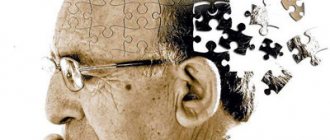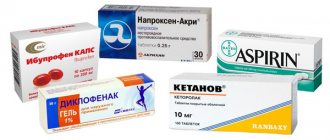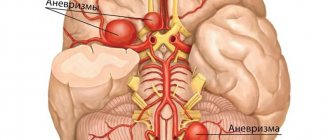Myasthenia gravis (muscle weakness) is a neuromuscular pathology, the causes of which are autoimmune in nature. This disease manifests itself gradually, starting as general fatigue, weakness, drooping eyelids, blurred speech, difficulty swallowing and chewing. Any human movement, even the most insignificant, is the result of the work of muscles and nerves and the interaction between them. With myasthenia gravis, the connection between cell receptors that transmit information is disrupted, the muscles simply stop “listening” and do not work properly. The disease is more often diagnosed in women under 40 years of age, men get sick much less often, and children are extremely rare. It is not inherited.
Causes
Despite the fact that myasthenia gravis first became known in the 17th century, when it was described by the English scientist Willis, there is still no consensus on what causes it. Often the disease develops against the background of an acute respiratory viral infection or after very severe stress, but often it appears simply “out of the blue.” The body produces antibodies to its own acetylcholine receptors, which receive and transmit information between cells. Where exactly antibodies against the receptors are produced is unknown, but most often the occurrence of myasthenia gravis is associated with hyperplasia (enlargement) of the thymus gland. However, it is impossible to talk about a 100% connection between the enlargement of the thymus gland and the development of myasthenia; today, this cause of myasthenia is only an assumption.
Symptoms
Weakness and sudden fatigue can affect any muscle in the human body. More often - the muscles of the face and neck.
Characteristic symptoms of myasthenia gravis are:
- ptosis (drooping eyelids);
- double vision;
- nasal voice and speech disorders;
- difficulty swallowing, fatigue of the masticatory muscles;
- fatigue of the neck muscles (difficulty keeping your head straight);
- weakness in arms and legs.
Symptoms appear after exercise, even after the most minimal. The greater the load, the worse the patient's condition. For example, at first, speech impairments are minimal - a person has a slight nasal tone, but pronounces words quite clearly, then he begins to “swallow” individual sounds, and then cannot speak at all. Rest can reduce these symptoms. Symptoms are especially severe 3-4 hours after waking up.
Depending on the manifestations, the following forms of the disease are distinguished:
- ocular (the disease is manifested only by drooping eyelids, double vision; for such patients, therapy with anticholinesterase drugs is usually sufficient);
- bulbar (impaired speech, chewing, swallowing, breathing - the danger of this form is that breathing difficulties can increase rapidly);
- generalized (affects all muscles, this is the form of myasthenia gravis that is meant when they talk about myasthenia gravis or Erb-Goldflam disease; the disease affects all muscles, from facial and neck muscles to the muscles of the arms and legs);
- fulminant (the most dangerous form, as it leads to disability and even death, it is usually caused by a malignant tumor of the thymus gland, all muscles are affected, including skeletal muscles, while therapy simply does not have time to have its effect, it is simply impossible to prevent the dangerous consequences of myasthenia gravis).
More common is the generalized form, which usually begins with weakness of the facial muscles.
BE HEALTHY! AROMATHERAPY - CONSULTATIONS AND RECIPES
Myasthenia. Etiology and symptoms of the disease. A disease of the nerves and muscles, characterized by muscle weakness. It develops when it is difficult to transmit the “movement” signal from nerves to muscles due to impaired acetylcholine metabolism. In the human body, which is a complex electrochemical machine, movement is carried out with the help of muscles: striated muscles (skeletal muscles) work in the limbs, and smooth muscles work in the internal organs and blood vessels. The signal for the former is sent through the motor nerves, at the point of connection of the nerve to the muscle (end plate), the electrical impulse is transmitted using a chemical substance - acetylcholine, which passes from the nerve into the gap between the nerve and the muscle (synaptic gap), its appearance in the gap causes an electrical discharge and contraction (work) of the muscle. Next, acetylcholine is split into two parts by a special enzyme (cholinesterase), they are reabsorbed into the nerve, where they are combined and can be used again. With myasthenia gravis, the complex system of synthesis, accumulation, release of acetylcholine, its destruction, and new absorption is disrupted, and then the next impulse becomes more and more difficult to pass to the muscle, which means that each subsequent movement is difficult and, finally, stops completely. This condition is called pathological (that is, abnormal) muscle fatigue syndrome. Symptoms and course. Most often, the disease begins with drooping eyelids and double vision in the evening, followed by a change in voice in the evening or after prolonged speech stress. Further, the patients note that they feel good in the morning, but after getting up and doing the morning toilet, they were already tired, as if they had worked excessively. In cold weather, health improves, in warm weather it worsens. After rest, strength is restored as quickly as it was lost. The disease can go unrecognized for years, but it progresses, and sooner or later it makes itself felt, but perhaps too late to do anything against it. The fact is that the respiratory muscles also work “on acetylcholine,” and such a formidable complication of myasthenia gravis is possible, such as a violation (cessation) of breathing, when the patient may die. Infantile myasthenia requires special attention. Parents should not neglect children's complaints, for example, that they cannot get on the bus or the fact that a child who walks normally cannot pedal a bicycle. Such children often become the subject of dissatisfaction and accusations from adults of “laziness”; they become withdrawn and stop complaining until movement disorders become obvious to everyone. And the most dangerous thing is that in children the generalization of the process - a sharp increase in respiratory failure, develops suddenly. Recognizing myasthenia gravis at the onset of the disease is always very difficult, therefore, at the first suspicion of myasthenia gravis, a consultation with a neurologist and hospitalization in a specialized clinic is necessary, in Moscow this is the B.M. Hecht Neurological Center. The prognosis with timely diagnosis and proper treatment is favorable. Aromatherapy for myasthenia gravis. The combination of the properties of essential oils, which increase muscle strength and endurance, normalize microcirculation in tissues, regulate mineral metabolism, local analgesia, anti-inflammatory and antioxidant, makes it possible to use aromatherapy for myasthenia gravis. Essential oils have these properties: peppermint, pine, fennel, black pepper, lavender, marjoram, rosemary, lemongrass, grapefruit, chamomile, cypress, juniper, ginger, coriander, cajuput, thyme, jasmine, lemon, eucalyptus, clary sage, bergamot , geranium. In recent years, the nootropic activity of plant aromas on the mediator link of the central nervous system has been revealed. Thus, lavender essential oil promotes the release of serotonin, jasmine essential oil stimulates the release of endorphins, and geranium essential oil acts on the production of acetylcholine. It has been established that the components of essential oils of monarda, bergamot and geranium, acting on tissue cells, cause the release of active acetylcholine, which is in a colloid-bound state and the corresponding provision of mediator function. The use of aromatherapy should be preceded by the selection of essential oils based on the presence of contraindications, aroma (the aroma should evoke positive emotions), and based on the results of testing for individual intolerance. Methods of using aromatherapy for myasthenia gravis: 1) Rubbing problem areas with massage oil or massage cream - 50 drops of essential oils per 50 ml of base. Rubbing 3-4 times a day, course 21 days, break 1-2 weeks; 2) Segmental or point-segmental massage with massage oil every other day, course of 10-15 sessions; Aroma massage has a variety of effects on the body. As a result of the conversion of mechanical energy into thermal energy, the thermal receptor system of the skin is excited. The resulting excitation is transmitted to the regulatory vasomotor centers in the medulla oblongata and, switching to the sympathetic (vasoconstrictor) and parasympathetic (vasodilator) nerves, cause a reflex change in the lumen of the blood vessels. Essential oils that penetrate the skin under the influence of aroma massage are carried through the lymph and blood flow and are chemoreceptor irritants. According to research, the performance of tired or relaxed muscles after a massage can increase by 5-7 times. 3) Aroma baths - for 0.5 liters of warm milk (emulsifier for essential oils) 6-8 drops of selected essential oils, every other day, course of 10-15 sessions; Aromatic baths have a healing effect on the patient’s body, immersed in fresh water with essential oils dissolved in it. The latter, having a high ability to dissolve in fats, penetrate through the pores into the surface layers of the skin, are carried into the lymph and blood, and have an irritating effect on numerous receptors. In this case, various biologically active substances are released, including acetylcholine, which is so necessary for myasthenia gravis. 4) Applications - apply a napkin with massage oil to the problem area, cover with parchment and a bandage. Duration up to 1 hour, 3-4 times a day, course 21 days, break 1-2 weeks. Therapeutic and preventive physiotherapy: The use of Lyapko applicators is recommended. Applicators from reflexologist N. G. Lyapko are intended for wide use for therapeutic purposes, as well as as a preventive measure to strengthen and maintain health, increase performance, general vitality, normalize sleep, mood, metabolism, and help get rid of bad habits. Applicators can be used for effective treatment (without medication or with a small amount of medication) of a wide variety of diseases and pathological conditions of the body. The Lyapko applicator is one of the few domestically produced medical products (production is located in the Republic of Crimea), which is known in America, Western Europe, and Australia. The applicator has no analogues in the world, since it has no equal in the strength and results of its therapeutic effects, in its simplicity and reliability of use. Without causing harm, the applicator’s harmonious effect on the body helps to get rid of ailments and improve health. Tens of thousands of people successfully use the applicator and admire its uniqueness. It has become a true friend and health advocate for older people, and it provides a real return of strength, energy and vitality to all who use it. Applicators can be used in various medical institutions, in sanatoriums, and also independently at home. So, upon contact with the skin, many physicochemical changes occur on the surface of the applicator needles, characteristic of changes under the influence of direct current. As a result, oxide films form on the needles and a galvanization effect (bioelectric effect on tissue) occurs. In this case, point galvanic currents of maximum magnitude arise at the tips of the needles (since a potential difference arises between the base metal of the needle and the peripheral metal of the coating, which are short-circuited 1-1, 1-2, 1-3 with each other (Fig. 1). In addition In addition, between needles made of different metals in the skin, inter-needle galvanic currents 1-4 - 1-9 arise, the magnitude of which depends on the conductivity of the skin and its saturation with electrolytes (Fig. 2).Galvanization helps improve metabolism, enhances reparative (restorative) processes, has a resolving effect, helps the production of biologically active substances (acetylcholine, histamine, heparin, etc.), improves the conduction of nerve impulses, reduces pain and tactile sensitivity of the skin. Healthy nutrition for myasthenia gravis: 1) Russian protein and vitamin products • “Cedar breakfast for health hearts" with hawthorn and amaranth argo.pro/catalog/vmk/407654/, • Cedar power "Boyarskaya" argo.pro/catalog/vmk/7019/, • Cedar cocktail "Heart Amulet", • Cedar cocktail "Rhythm of Life", These products with amaranth and hawthorn contain choline, from which the body synthesizes acetylcholine, which is so important for the prevention and treatment of myasthenia gravis. 2) Vegetable oils – cedar argo.pro/catalog/korrektsiya-vesa/7012/ and sesame, containing significant amounts of vitamins: • B1 (thiamine), participates in the metabolism of carbohydrates, proteins and fats; ensures normal growth; increases motor and secretory activity of the stomach; normalizes heart function. In the body, thiamine is converted into coenzyme cocarboxylase. Thiamine B is necessary for the synthesis of the most important neurotransmitter - acetylcholine. Thiamine deficiency can develop with alcohol abuse, with an excess of refined carbohydrates in the diet, with diseases of the gastrointestinal tract, due to impaired absorption of this vitamin, and with the use of antibiotics. The main manifestations of hypovitaminosis B1 are polyneuritis, memory disorders, disturbances of the heart and gastrointestinal tract. Vitamin B1 is found in large quantities in the pine nut kernel. • B4 (choline), maintains the integrity of cell membranes; participates in the production of acetylcholine, necessary for the normal functioning of the nervous system; helps relax the walls of blood vessels, which improves blood flow and reduces blood pressure; lowers blood cholesterol levels.
Diagnostics
There are several ways to diagnose myasthenia gravis. These include:
- clinical examination and interview of the patient;
- electromyography (decrement test);
- blood test for antibodies;
- proserine test;
- computed tomography of the thymus gland.
The simplest, but at the same time reliable, proserine test is considered: the patient is injected subcutaneously with proserine, after which a sharp but short-term improvement occurs. Myasthenia gravis is often accompanied by other diseases, so when making a diagnosis, other ailments should be excluded.
Medicines to reduce muscle tone
In some cases, non-depolarizing muscle relaxants are used for myasthenia gravis:
- Tracrium;
- Esmeron.
Considering the contraindications, the doctor tries not to prescribe muscle-relaxing drugs to treat patients, since many patients have increased sensitivity to their effects.
Non-depolarizing muscle relaxants are not used, since in many cases the patient develops an unpredictable reaction to their administration. The drug Succinylcholine causes a marked increase in the level of potassium in the blood serum and high temperature in the patient.
Treatment
There is no cure for myasthenia gravis, but sustained remission can be achieved. The following drugs are used for treatment:
- kalimin 60H;
- glucocorticoids (prednisolone, metypred, medrol, etc.);
- cytostatics (azathioprine, cyclosporine).
With any treatment regimen, it is important to take potassium preparations - potassium chloride powders, potassium-normine, etc. Potassium salts enhance the effect of potassium and also improve neuromuscular transmission.
Drug treatment is long-term, the patient takes medications for life. Glucocorticoids and cytostatics have a large number of side effects, so you should not prescribe or cancel them without permission under any circumstances. The dose and regimen are prescribed by the doctor.
At the same time, it is constantly necessary to monitor the patient’s condition - monitor blood sugar, blood pressure, and prevent osteoporosis and ulcers. During periods of exacerbations, when drug therapy is ineffective, plasmapheresis is used 5-7 times every other day with plasma replacement. Immunoglobulins may also be administered intravenously. Surgical treatment of myasthenia gravis means removal of the thymus gland. It is carried out in the first two years of the onset of the disease, if a person is diagnosed with a generalized form of myasthenia gravis. Surgery to remove the gland is not the only solution to the problem; it is followed by drug therapy. In rare cases, removal of the thymus does not change the patient's condition at all, but more often there is an improvement. The indication for surgery is enlargement of the thymus, which can be diagnosed by computed tomography of the mediastinum.
You can learn about another neurological disease, cerebral atherosclerosis, by following the link provided. Symptoms, causes, diagnosis and treatment of cerebral ischemia are described here.
Useful foods for myasthenia gravis
Potassium is necessary for skin diseases and helps restore muscle function. Therefore, it is recommended to eat foods rich in potassium ions.
- fresh fruits (oranges, bananas, avocados, melon);
- fresh vegetables (legumes: beans, lima and lentils; potatoes, rutabaga, pumpkin);
- not crushed grain;
- parsnip;
- dried apricots, raisins.
Also, with myasthenia gravis, it is extremely necessary to consume foods rich in calcium. He takes part in such processes as:
- muscle contractility and increases the excitability of nerve tissues;
- keeps bones and teeth strong, which prevents fractures due to injuries. After all, people with myasthenia gravis are more susceptible to injury than ordinary people.
- main: dairy products;
- fresh vegetables: cabbage (cauliflower, white cabbage), turnip (its leaves), asparagus, lentils, legumes;
- nuts;
- figs;
- egg yolks;
- soft sardine and salmon bones.
In order for calcium to be well absorbed in the body, it must be consumed with phosphorus (in a ratio of 1 to 2). Another very important property of phosphorus for myasthenia gravis: it helps preserve energy in the cells.
- cottage cheese;
- cheese;
- meat;
- brain;
- beef liver;
- fish;
- eggs;
- cereals: buckwheat, pearl barley, oatmeal;
- nuts (walnuts).
Traditional medicine for myasthenia gravis:
Take 200 grams of oats, rinse well and add 0.5 liters of water. Boil for 40 minutes. Then leave for an hour and filter.
You need to take it for 3 months - 4 times a day, 0.5 cups and add a teaspoon of honey 30 minutes before meals. Then take a break for 3 weeks. After they expire, repeat taking the oat decoction (another 3 months).
Take 3 heads of garlic, chop them, add 4 lemons to them (2 lemons with peel, 2 peeled). Add a glass of flax oil and 1 kilogram of honey to the resulting mixture. Mix all ingredients with a wooden spoon. Take this paste 3 times a day, 10 grams 30 minutes before meals.
Take a glass of sugar and 200 grams of onion, add a liter of water, mix. Add 30-40 grams of honey and cook for 90 minutes on low heat. The prepared mixture should be taken three times a day, one tablespoon at a time.
All these recipes must be alternated for better treatment of myasthenia gravis.
Dangerous and harmful foods for myasthenia gravis
You should avoid foods that contain magnesium, as it relaxes muscles:
- plant products (spinach, broccoli, white beans, unprocessed grains, dried apricots, blackberries, raspberries, sesame seeds);
- products of animal origin (flounder fish, shrimp, carp, sea bass, mackerel, cod, dairy products).
Diuretic products are contraindicated; they wash out potassium and calcium, which is extremely necessary in the treatment of myasthenia gravis:
Products from these two groups impair neuromuscular transmission.
When taking steroid drugs, it is necessary to reduce salt intake.
The patient should completely give up smoking, alcoholic beverages, sunbathing, and excessive physical activity.
You should be wary of the following medications: antibiotics, painkillers, antipsychotics, laxatives and anti-seizure medications.
You need to strictly adhere to the diet. If the patient has bulbar myasthenia, then food should be cut into small pieces and only soft foods that are easier to chew should be prepared. It is better to wash down your food with water - it will help with swallowing.
It is necessary to distribute all tasks into small parts throughout the day: tasks that require more strength and energy should be done during periods of activity, rather than fatigue.
source
Course of the disease
Myasthenia gravis is varied in its manifestations. According to the course of the disease, they are distinguished:
- myasthenic episodes (symptoms occur extremely rarely, myasthenia may appear only once in a lifetime and then not manifest itself at all);
- myasthenic condition (the disease has manifested itself, but does not progress);
- progressive form (the patient’s condition without therapy slowly but constantly worsens);
- malignant form (rapid development of the disease).
The progressive and malignant forms are very dangerous because serious breathing problems can develop, which is life-threatening.
Prognosis and possible complications
Myasthenia gravis usually occurs at a young age, with most sufferers first experiencing symptoms around the age of 20. Without diagnosis and treatment, the disease progresses quite quickly. The mortality rate from this pathology is low, but the quality of life with this diagnosis is very significantly reduced. With properly selected drug therapy and timely surgery to remove the thymus gland, stable remission occurs in 80 percent of patients. The most important factor influencing a positive outcome is the patient’s attitude, responsibility and self-control.
It is very important to prevent the development of crises - myasthenic and cholinergic. They are very similar in their symptoms - a sharp and rapid deterioration of the condition, life-threatening weakness of the muscles that are involved in the breathing process, excessive salivation, swallowing problems, etc.
The cause of myasthenic crisis is insufficient or incorrect use of anticholinesterase drugs (kalimina), and cholinergic crisis is caused by excessive use of these drugs. Both crises are very dangerous and cannot be dealt with on your own. Urgent hospitalization in the intensive care unit, artificial ventilation and administration of atropine (for cholinergic crisis) or proserine (for myasthenic crisis) are required. To prevent the development of crises, you must strictly adhere to the doctor’s recommendations.
Description
This is an autoimmune disease in which the body perceives its own cells as foreign and begins to fight them. Acetylcholine receptors in postsynaptic membranes are damaged.
It happens (depending on which muscles are affected):
- generalized with or without disturbance of breathing and heart function;
- local pharyngeal-facial and ocular;
- musculoskeletal.
Myasthenia gravis in children occurs:
- congenital - occurs in 10% and is transmitted from the mother. A woman with a similar diagnosis can become pregnant;
- in infants. It is easy to suspect a deviation in a newborn baby: the baby is crying quietly and weakly, he has obvious difficulties in sucking;
- in preschool age;
- teenage
Prevention of myasthenia gravis and its complications
It is impossible to prevent the disease, but you can do everything possible to live a full life with such a diagnosis. Firstly , doctor's control. Such patients are managed by neurologists. In addition to the prescribed treatment regimen and systematic visits to a neurologist, it is necessary to monitor the general condition (blood sugar, blood pressure, etc.) in order to prevent the development of other diseases during the treatment of myasthenia gravis. Secondly , you should avoid excessive stress - physical and emotional. Stress, hard physical work, and overly active sports worsen the condition of patients. Moderate exercise and walking are even beneficial. Thirdly , you should avoid exposure to the sun. Fourthly , it is necessary to know the contraindications for patients with myasthenia gravis and strictly observe them.
The doctor is obliged to issue a list of medications contraindicated for such a patient. It includes magnesium preparations, muscle relaxants, tranquilizers, some antibiotics, diuretics with the exception of veroshpiron, which, on the contrary, is indicated.
You should not get carried away with immunomodulatory drugs or any sedatives, even those that seem safe (for example, valerian or peony tincture). Fifthly , strictly follow the treatment regimen prescribed by the doctor, do not skip medications and do not take more medications than prescribed by the attending physician.
Use of drugs for myasthenic syndromes
Group of drugs
increasing muscle weakness
Aminoglycosides, polymyxin B, colistin, tetracycline, lincomycin, clindamycin, penicillin, ampicillin, ciprofloxacin, sulfonamides, chloroquine
Cephalosporins, chloramphenicol, rifampicin, nitrofurans, chylons/fluoroquinolones (nalidixic acid), isoniazid
Trimethine, diphenine, barbiturates, carbamazepine, high dose benzodiazepines
Valproic acid preparations, hexamidine
Neuroleptics (aminazine, high dose benzodiazepines, lithium preparations), amitriptyline
Thioridazine (Sonapax), benzodiazepines in low doses
Corticosteroids, ACTH drugs, oral contraceptives, oxytocin, thyroid hormones
β-blockers, quinidine, lidocaine, procainamide, calcium antagonists, ganglion blockers, guanethidine
Digoxin, reserpine, methyldopa, spironolactone, triamterene
Analgesics, anti-inflammatory drugs
Morphine derivatives, quinine, penicillamine
Acetylsalicylic acid, nonsteroidal anti-inflammatory drugs, pentazocine, gold salts
Muscle relaxants, magnesium preparations, iodine-containing contrast agents, antacids, laxatives, intravenous tocolytics











